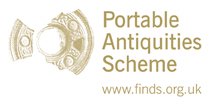Server check!
You are on the training database
Crotals
Crotals are hollow and have a small piece of bronze inside them so that when they are moved they make a noise. This means they are sometimes referred to as bells or rattles. They are pear shaped and formed by pouring melted bronze around a clay core within a mould. There would be a small hole left through which the clay could be removed and then the hole would have been sealed. They are quite large to have been attached to horses harnesses but might have been hung from wagons at attract people's attention. Some have decoration.
Dating and distribution
Date: 950-750 BC
Distribution: so few have been found it is impossible to see any logical distribution pattern
Example
 These unusual objects are known as 'crotals' - globular or pear-shaped bells or rattles. They may have been rather heavy for suspension from straps, for example on horse harnesses, and instead may have hung from a rigid support, such as the draught-pole of a wagon. In this way the sound produced while in motion, while not very 'musical', would nevertheless draw attention to and enhance the procession of the wagon. As wagon accessories, crotals join other ornamental bronzes in embellishing wheeled vehicles in this period.
These unusual objects are known as 'crotals' - globular or pear-shaped bells or rattles. They may have been rather heavy for suspension from straps, for example on horse harnesses, and instead may have hung from a rigid support, such as the draught-pole of a wagon. In this way the sound produced while in motion, while not very 'musical', would nevertheless draw attention to and enhance the procession of the wagon. As wagon accessories, crotals join other ornamental bronzes in embellishing wheeled vehicles in this period.
Crotals were cast hollow by flowing the molten metal around a clay core suspended within the mould. A small perforation was left in one side of each orb to allow the clay core to be scraped out, leaving behind only a small lump of bronze to serve as the rattle. The hole was then blocked with a metal plug. The initial casting also created a free-running ring at the top of each crotal for its suspension.
These three crotals were part of a large find of bronze metalwork made in Dowris bog in the mid-nineteenth century, which included weapons, tools and elaborate sheet metal vessels.
References
- G. Eogan, The hoards of the Irish Later (Dublin, University College, 1983)


